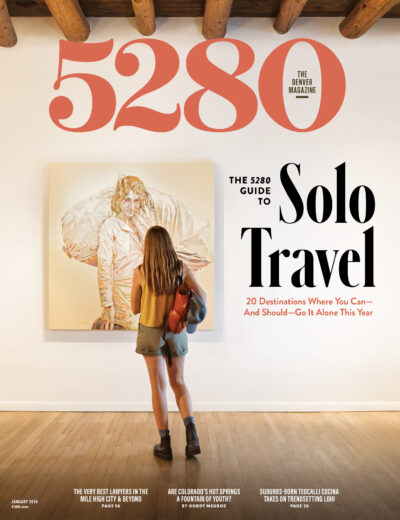The Local newsletter is your free, daily guide to life in Colorado. For locals, by locals.
Alaina Bravo brought the plane in low while her bombardier, Amanda Willson, readied the payload—a pumpkin. As they approached the drop zone, Willson aimed and sent the squash somersaulting through the air until it exploded right next to the target. The women cheered. Not only did their run win them first prize at Wray’s 2023 Brew n’ Que Fly In, but it also sent a message to their all-male competition: Women belong in aviation.
Coloradans have tried hard over the years to spread the word. The state boasts the world’s largest chapter of the Ninety-Nines, a global organization of women pilots that was co-founded by Amelia Earhart, while Metropolitan State University of Denver’s Women in Aviation International strives to boost representation throughout the aerospace industry. Still, women across the country are largely grounded. According to the Federal Aviation Administration, they make up only 9.6 percent of licensed pilots in the country.
This, of course, is not a new issue. Having previously been excluded from men’s events, in 1929, revered aviators such as Earhart and Louise Thaden competed in the first Women’s Air Derby, with a prize purse of $8,000 (about $145,000 today). Fourteen of the 20 solo pilots managed to touch down in Cleveland nine days after leaving Santa Monica, California. Nearly a century later, the competition lives on as the nonprofit, women-only Air Race Classic. This year’s event (June 18 to 21) will feature roughly 60 two-pilot teams winging it from Carbondale, Illinois, to the checkered flag in Loveland. When Bravo, who’s training to be certified to fly other aircraft, and Willson, a maintenance planner for a private jet charter company, learned the legendary contest would culminate in their backyard, they saw an opportunity to follow their idols. “How could we not do it?” says Bravo, who met Willson in 2021 at a Ninety-Nines networking event.
Fortunately, the competition isn’t cutthroat. “The race is really focused on cultivating skill,” Bravo says. “Nobody’s sabotaging airplanes. Everyone’s there to encourage one another.” To that end, organizers paired the duo with a Denver pilot and former Air Race winner who coached the two rookies on what to expect. Chief among their challenges will be the sheer size of the course. The 2,400-mile, nine-stage route will test the pilots’ navigational prowess as they balance wind speed, fuel consumption, and weather. “We’ve had to make Plan A, Plan B, and Plan C for where we will go for fuel and where we will overnight,” Bravo says, “since racers can only fly during daylight hours.” Even then, there’s always a chance an unexpected storm could force their single-engine Cessna 172 off course, not that it would be the first time pilots like Willson and Bravo have had to chart their own flight path.









